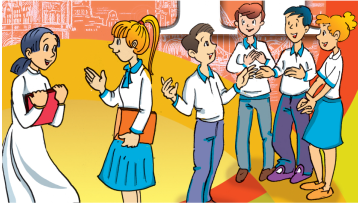Tiếng Anh 11 - Sách học sinh - Tập hai (Thí điểm hệ 10 năm)
Mô tả nội dung sách tại đây
1
Unit 6.
Global warming
Getting started
Language
Vocabulary
Pronunciation
Skills
Reading
Speaking
Listening
Writing
Communication and culture
Culture
Looking back
Pronunciation
Now you can ...
2
Unit 7.
Further education
Getting started
Language
Vocabulary
Pronunciation
Skills
Reading
Speaking
Listening
Writing
Communication and culture
Communication
Looking back
Pronunciation
Now you can ...
3
Unit 8.
Our world heritage sites
Getting started
2.
Language
Vocabulary
Pronunciation
Skills
Reading
3.
Speaking
Listening
Communication and culture
Communication
Looking back
Pronunciation
Vocabulary
Now you can ...
4
Review 3.
Language
Vocabulary
Pronunciation
Skills
5
Unit 9.
Cities of the future
Getting started
Language
Vocabulary
Pronunciation
Skills
Reading
Speaking
4.
Listening
Writing
3.
Communication and culture
Communication
Looking back
Pronunciation
Now you can ...
6
Unit 10.
Healthy lifestyle and longevity
Getting started
Language
Vocabulary
Pronunciation
Grammar
Skills
Reading
Speaking
Listening
Writing
Communication and culture
Looking back
Pronunciation
Now you can ...
7
Review 4.
Language
Vocabulary
Pronunciation
Skills
